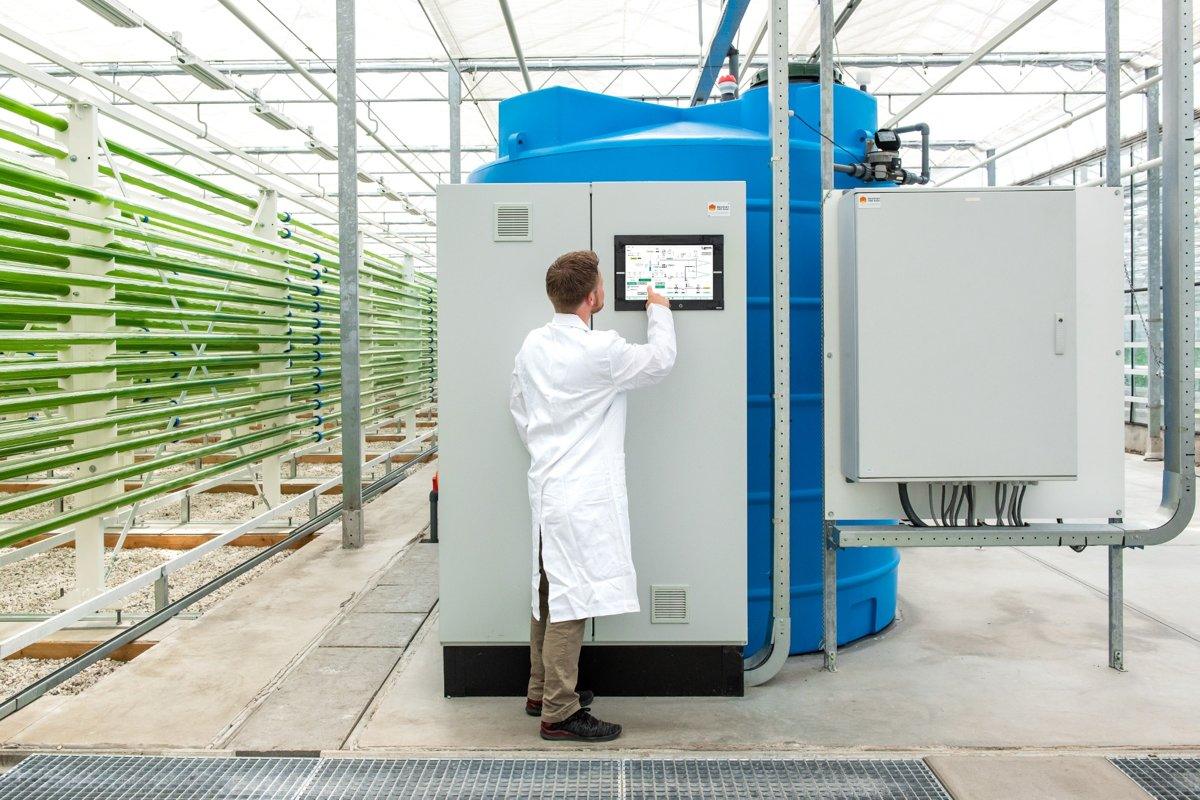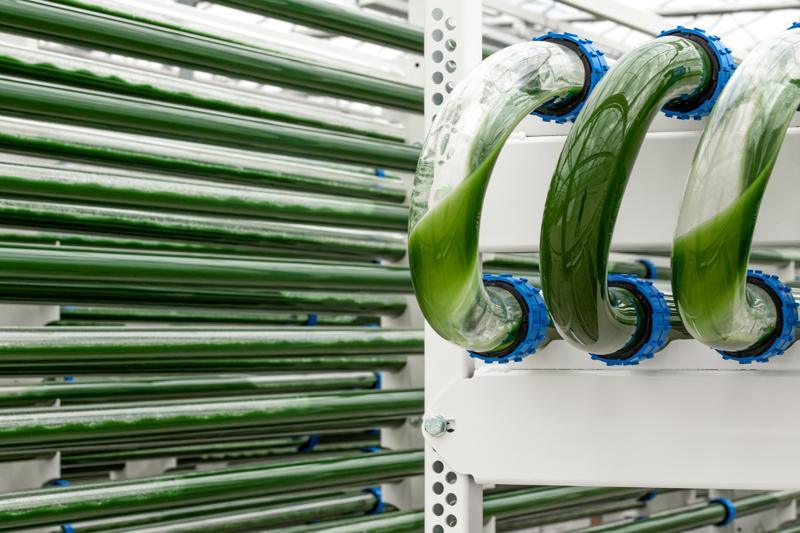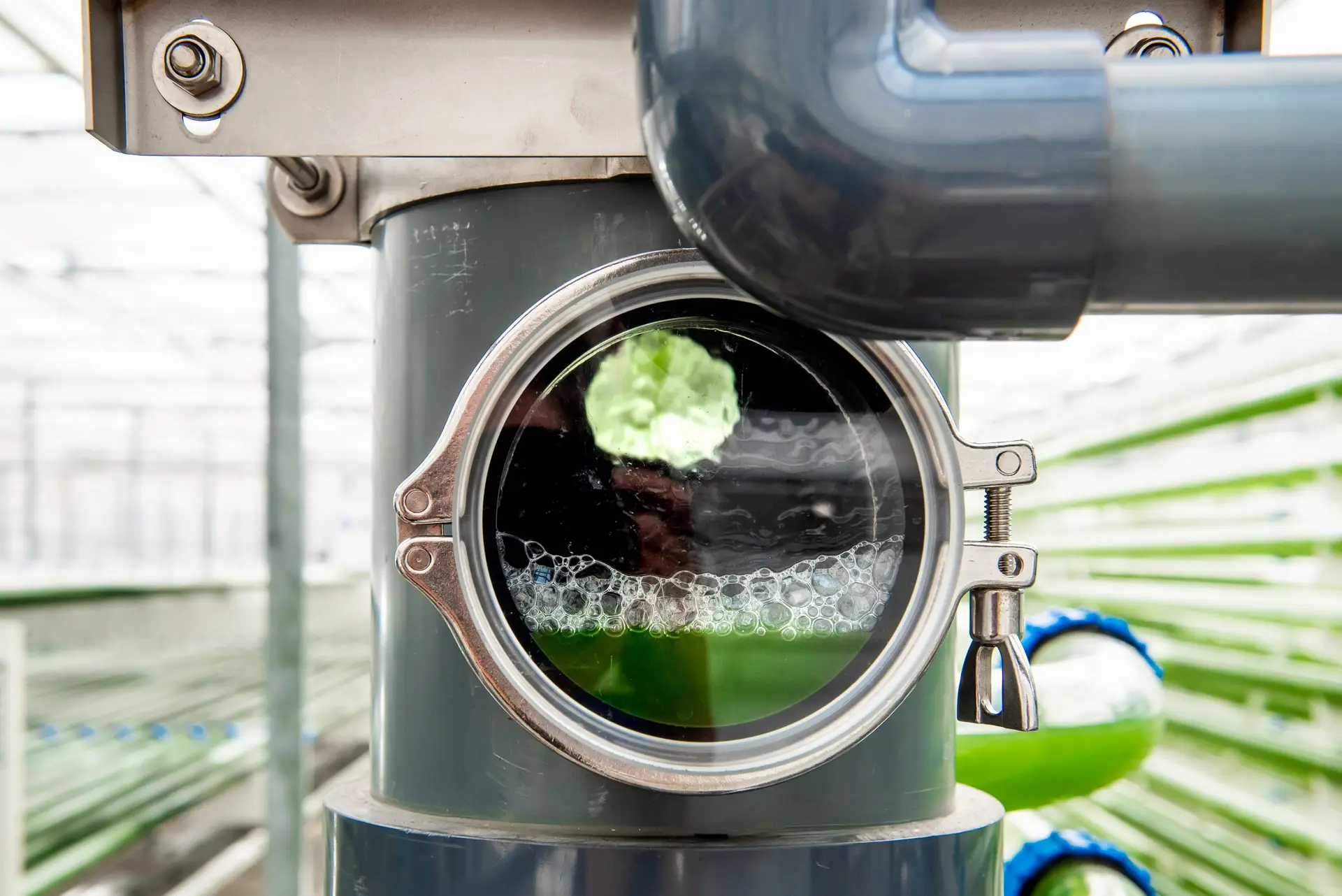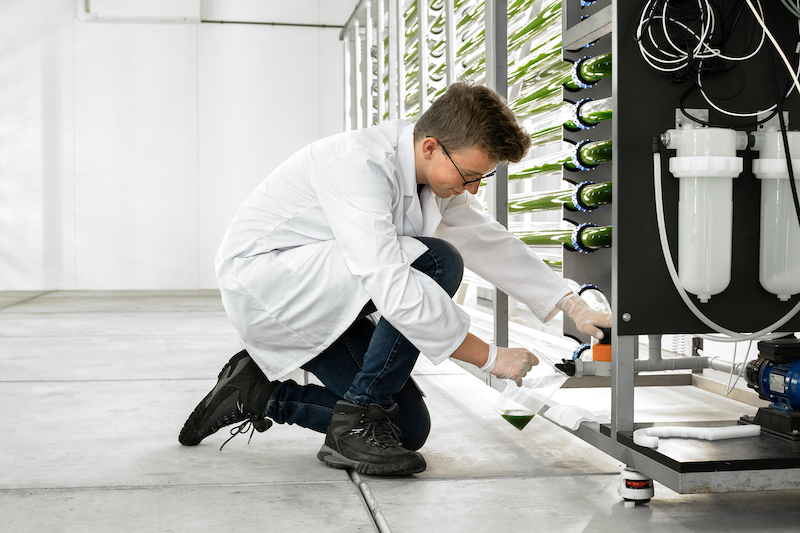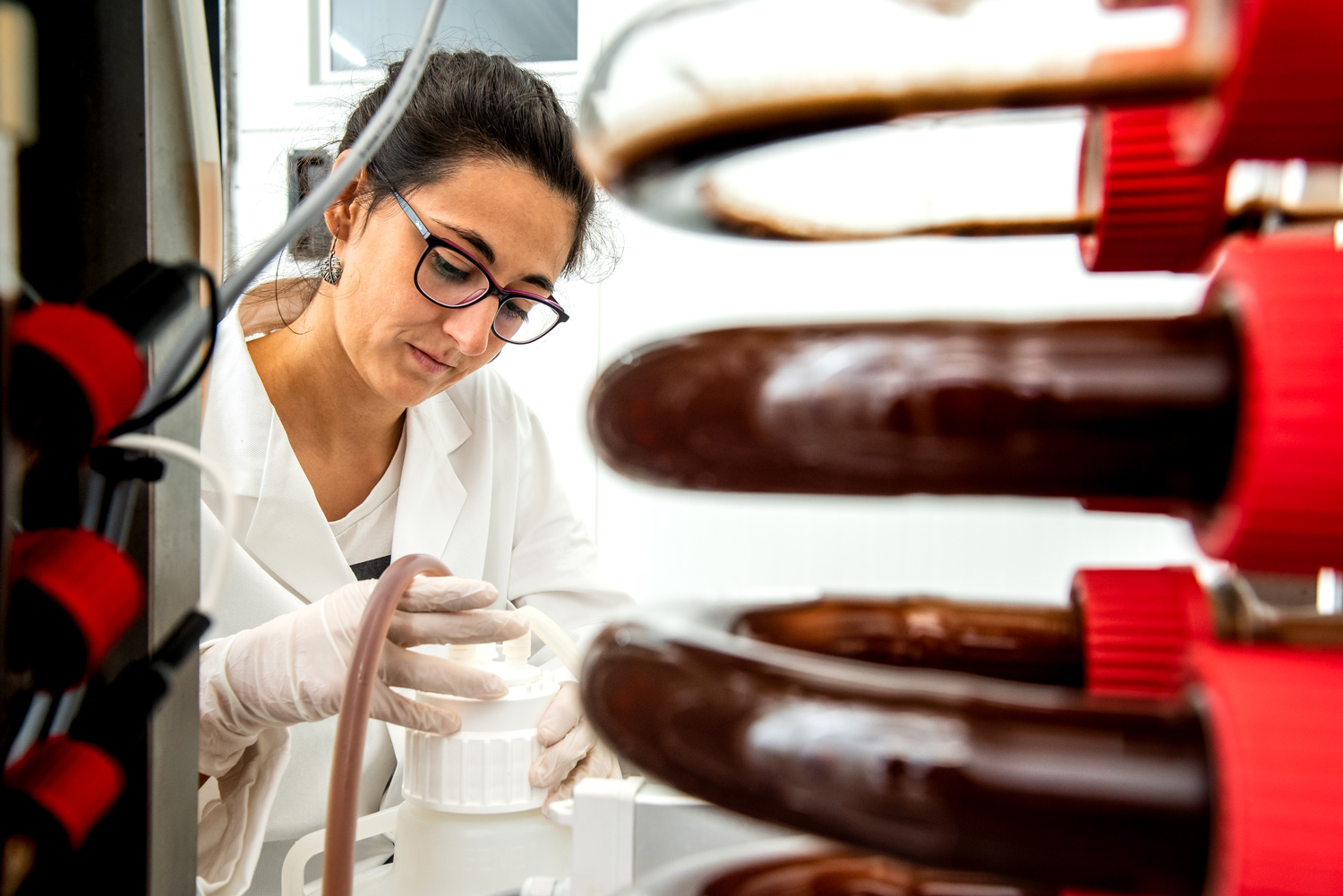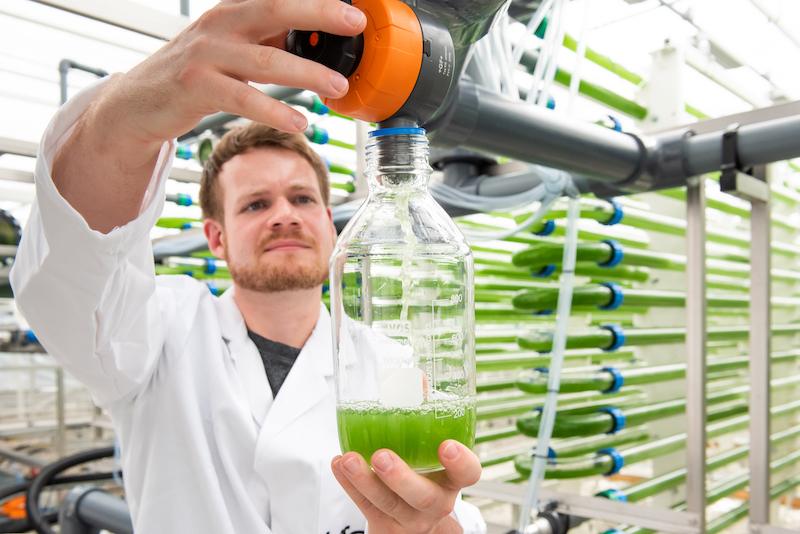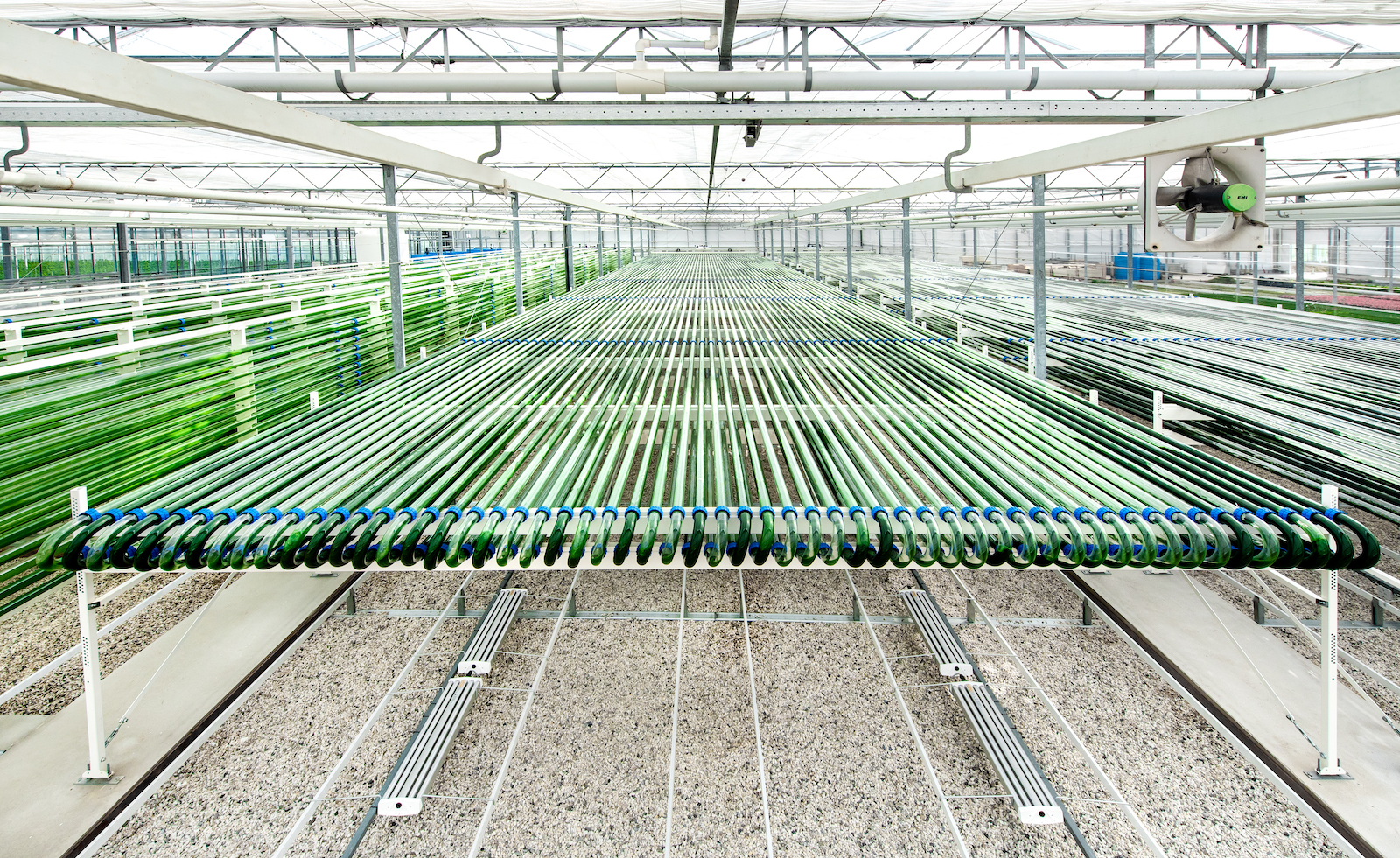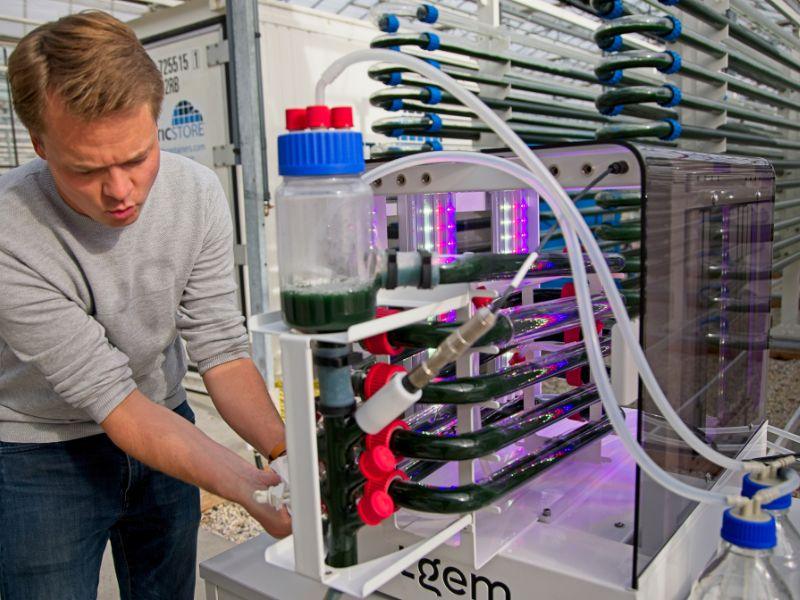
Meet the Architect: CSO Pieter Oostlander shares insights on process at Lgem’s AlgaeHub, focusing on plant-based protein innovations.
A revolution in the plant-based meat industry. That is how to best describe the results when v2food and Lgem joined forces to cultivate a temperature-sensitive red algae. The optimized red algae extract led to RepliHue™, an ingredient that changes the color of plant-based protein at the same time and temperature as animal meat does. Pieter Oostlander, CSO at Lgem, was the bioprocessing lead for the joint research team. In this behind-the-scenes article, he delves into the process that led to the successful cultivation of the unique red algae extract, how Lgem optimized production efficiency to an industrial level, and the key ingredient that made it all possible.
Setting the stage
v2food, at the forefront of global sustainable food innovation in Australia, discovered a temperature-sensitive red algae capable of mimicking the food coloring process and color transition of cooking meat. Seeking to scale up the cultivation process, they approached Lgem for its expertise. Lgem, leveraging its proprietary photobioreactor systems, formed a dedicated cultivation & bioprocessing team of experts led by Pieter Oostlander, a luminary in red algae cultivation within the aquaculture industry.
Pieter: “Our first challenge was demonstrating cultivation at high density and determining the pigment quantity, under commercially scalable conditions for product testing by v2food.”

Reactors running simultaneously
At the project’s outset, Lgem initiated weekly meetings with v2food, providing detailed insights into methodologies, presenting the obtained results, and jointly evaluating the feasibility of various ideas. The first experiment in Lgem’s Lab-25 photobioreactor aimed to determine optimal process conditions for light, temperature, nutrients and dilution rate. Identifying these conditions led to the subsequent challenge of replicating them on an industrial scale.
Pieter: “The most crucial factor for algae cultivation at an industrial level is the ability to control light. It is important to ensure consistency in the reactions of algae to light across different scales.”
Lgem deployed a significant number of its researchers and reactor capacity to quickly achieve results. Pieter: “At times we had four Lab-25 photobioreactors running simultaneously during the research phase, each on a different set of conditions so we could quickly compare the results and reach an optimum. The joined research team achieved substantial improvement in cultivation productivity gains, and successfully demonstrated continuous culture and harvesting over extended periods.”
“The most crucial factor is not only the ability to control light but also whether you can deliver the nutritions needed at an industrial scale.”
Challenges and solutions
To transition from the lab phase to the larger (pre-)production phase takes one week per step to scale up to the next level and start up the larger photobioreactors. This process provided valuable insights into the scalability and financial considerations for v2food.
The pivotal work for the project took place in the pre-production/de-risking phase within the Entos-45 photobioreactor. In this phase, Lgem determined the feasibility of delivering the necessary nutrients on an industrial scale, a critical aspect for overall success. Pieter emphasizes the importance of this part, as the costs associated with lab chemicals can become prohibitively expensive when transitioning to an industrial scale. “Another thing to consider is the accessibility of required chemicals. Not all chemicals are easily available globally, whether in liquid or solid form. The design of a production facility in Australia based on Lgem technology brought local restrictions to the surface, which needed to be taken into account.”
Close collaboration essential
During the project Lgem simultaneously cultivated algae on an industrial scale to support several other product development projects for v2food in Australia. “To meet the ingredient specifications and performance sought by v2food, it was essential that the product consistently received the same very specific treatment for the durability tests we also performed”, Pieter explains. This required close collaboration between Lgem and v2food. Working closely with the food safety specialist at v2food ensured that the production process was of the highest quality. As a result, the algae produced can be processed and packaged as food-grade, including at Lgem’s AlgaeHUB®, and thus be used for all required testing.
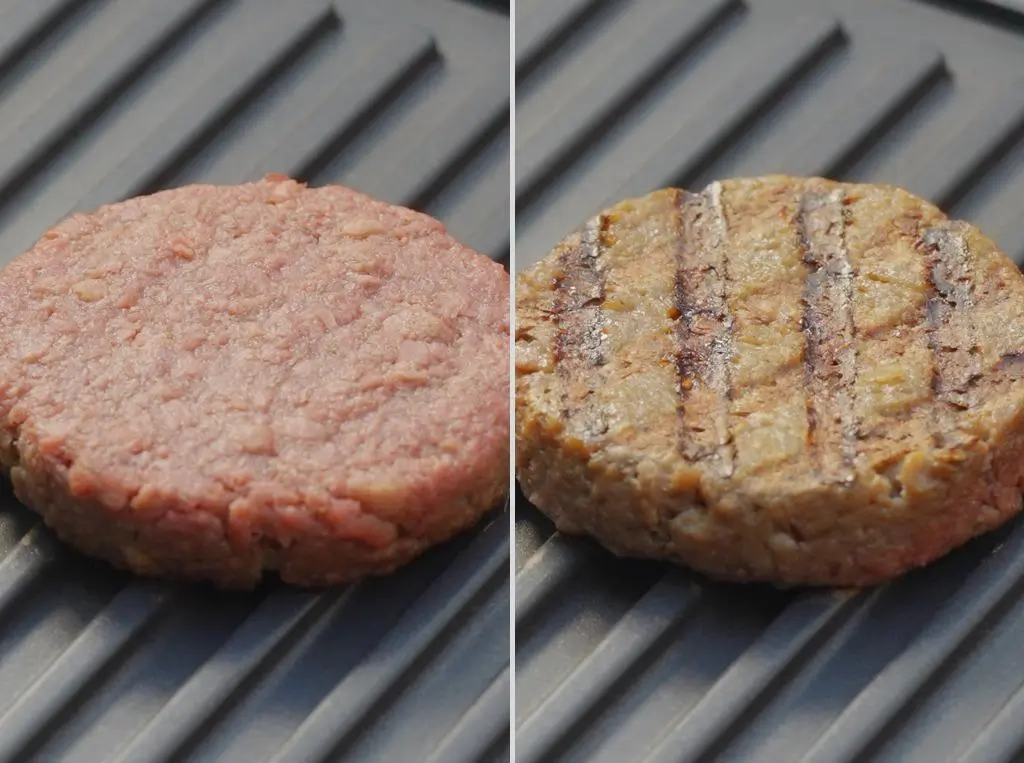
Courtesy: v2food
Key learnings in plant-dased protein development
The extensive collaboration with v2food resulted in the swift, successful, and cost-effective cultivation of a red algae extract, leading to RepliHue™ – an ingredient that changes the color of plant-based protein at the same time and temperature as animal meat does.
Thanks to the tight partnership, v2food gained valuable insights into the financial costs of algae cultivation on an industrial scale, encompassing everything from electricity costs to expenses to optimize production management. It revealed that achieving the maximum production output might not always be the optimal solution.
Lgem’s contribution to multiple projects for v2food supported the sustainability assessment for the ingredient production of v2food. This made it possible for Lgem to create true sustainable solutions across the board for v2food.
In conclusion
The intensive cooperation of v2food and Lgem has propelled the plant-based meat industry forward and set a precedent for collaborative research and development. As the global landscape shifts towards sustainable practices, insights from this partnership provide a blueprint for future collaborations, emphasizing the importance of expertise, collaboration, and adaptability in the pursuit of groundbreaking, yet sustainable solutions.
Explore the myriad collaborative opportunities at Lgem’s AlgaeHUB® where we open doors to innovation and partnership. Visit www.lgem.com to unlock your industry’s potential for microalgae.

